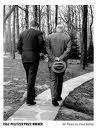
Johnson, HB. "The Bay of Pigs." http://www.answers.com/topic/bay-of-pigs-invasion. http://www.answers.com/, n.d. Web. 28 May 2010.
Meyer, K. E. "The Cuban Invasion." http://www.answers.com/topic/bay-of-pigs-invasion. http://www.answers.com/, n.d. Web 28 May 2010.
"The Bay of Pigs."
http://www.jfklibrary.org/Historical+Resources/JFK+in+History/JFK+and+the+bay+of+pigs.htm
http://www.jfklibrary.org/, 24 May 2010.
"Bay of Pigs Invasion." 2010. The History Channel website "
http://www.history.com/topics/bay-of-pigs-invasion. The History Channel website,
30, May 2010. Web. 28 may 2010
Meyer, K. E. "The Cuban Invasion." http://www.answers.com/topic/bay-of-pigs-invasion. http://www.answers.com/, n.d. Web 28 May 2010.
"The Bay of Pigs."
http://www.jfklibrary.org/Historical+Resources/JFK+in+History/JFK+and+the+bay+of+pigs.htm
http://www.jfklibrary.org/, 24 May 2010.
"Bay of Pigs Invasion." 2010. The History Channel website "
http://www.history.com/topics/bay-of-pigs-invasion. The History Channel website,
30, May 2010. Web. 28 may 2010









 On April 15, 1961 eight Douglas B-26B Invasion bombers disguised as Cuban planes by the CIA, simultaneously attacked three major Cuban airfields to clear the way for Brigade 2506.
On April 15, 1961 eight Douglas B-26B Invasion bombers disguised as Cuban planes by the CIA, simultaneously attacked three major Cuban airfields to clear the way for Brigade 2506.
